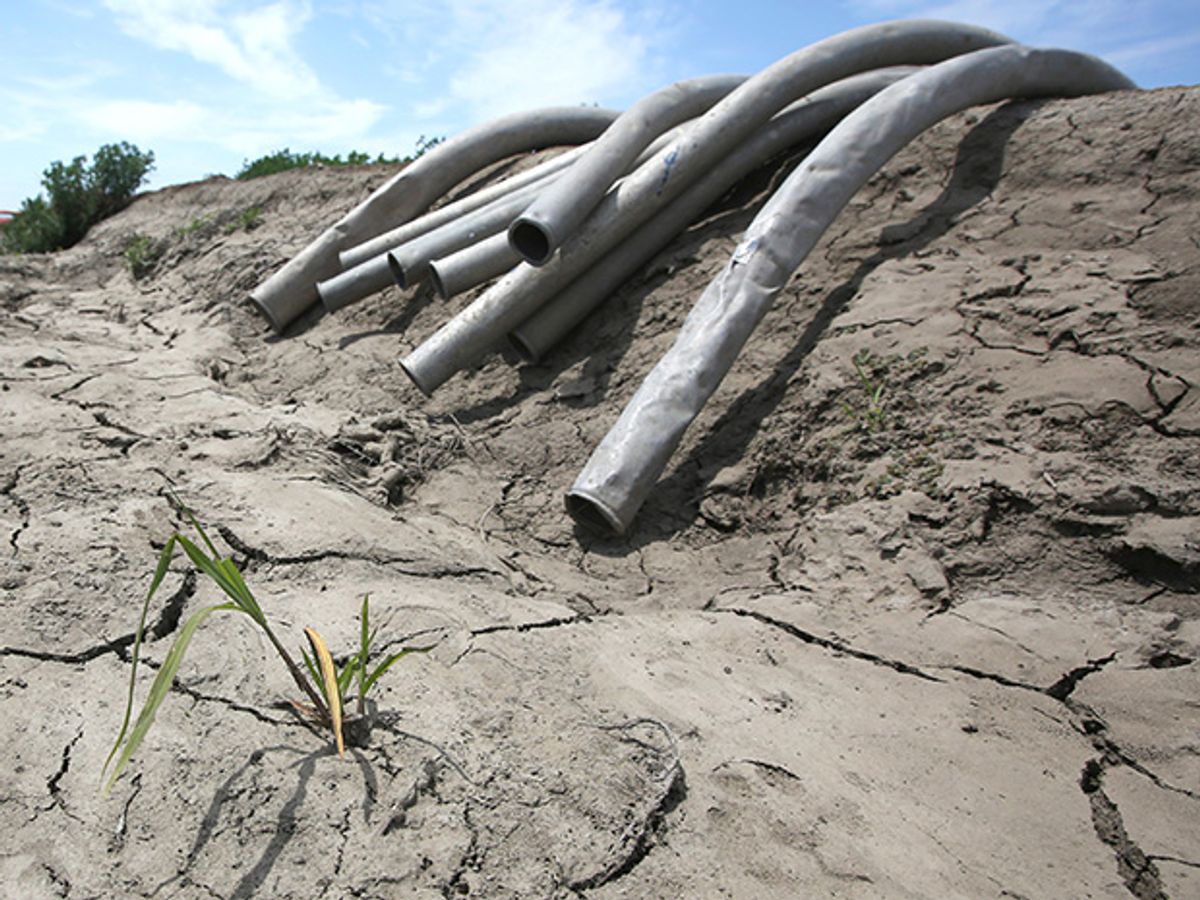Most power plants need water. As water resources are challenged in coming decades due to climate change, the bulk of the world’s power plants could see reduced capacity, because of water limitations or temperature changes according to a new study published today in Nature Climate Change.
The output of more than than 80 percent of thermoelectric plants could be affected after 2040, according to the research. However, the technologies to mitigate any capacity reductions due to change in water availability already exist.
Thermoelectric power plants, including coal, gas and nuclear, deliver the majority of the world’s power needs today. In 2040, fossil fuels will still likely make up the bulk of energy supply, according to the International Energy Agency.
Most plants that generate steam to make electricity use water to cool and condense the steam. Some plants recirculate the same water, while others, particularly older plants, tend to use once-through systems.
Hydropower also relies on water to directly produce energy. It is by far the largest renewable power resource on the planet, providing about 16 percent of global power needs.
Researchers from the International Institute for Applied Systems Analysis, in Austria, used a global hydrological and electricity model and applied it to hydropower resources and thermal power plants that use river water for cooling.
The study found increase in stream flow for high-latitude regions but consistent decreases in the United States, southern, central Europe, Southeast Asia, and southernmost parts of the Southern Hemisphere. Although some areas will have increased water flow, most of the hydro and thermal plants are located in regions that will see a decrease, the study found.
The model shows that by 2050, thermoelectric plants could face an average capacity reduction of 7 to 12 percent, and hydropower would face a 1 to 3 percent reduction. In some water-constrained regions, affects are already far higher. In California, for instance, the ongoing drought has slashed the output of its dams by about 20 percent.
It’s not just the amount of water that’s important; temperature matters, too, because warmer water is (obviously) a less effective coolant.Water temperatures will rise globally, but most significantly in eastern North America, Europe, and parts of southern Africa, the study found. There have already been incidences of power plants having to shut down because the water they use for cooling is too warm or, because the water released back into the environment is so warm it would damage the environment.
The good news is that, for hydropower at least, there are ample opportunities to offset any loss in productivity. A 10 percent boost in efficiency could offset losses due to reduced water flow through a hydropower plant, the researchers calculated.
Adding efficiency is not enough for most thermoelectric plants, however. Even a 20 percent increase in efficiency would not make up for the predicted reductions in available cooling water. In most regions, switching to fuels that use less water (most notably moving from coal to natural gas) could mostly offset the limit in available water through 2050.
(A 2013 study from the Union of Concerned Scientists found that freshwater withdrawals for power plants in the United States could drop more than 80 percent by 2050 and water consumption would go down by more than 40 percent, mostly due to the retirement of coal plants and the fact that most new plants use recirculating water systems and, to a lesser extent, air cooling.)
The new study found that a switch from freshwater to seawater cooling or air cooling is an important adaptation, especially for the 10 percent of thermoelectric plants that will be most severely affected. Plants could also use reclaimed water if seawater is not available.
Many regions are already designing new plants for a constrained water future. There are also other environmental concerns that are affecting how new power plants are designed that could wind up limiting water intake.
In the United States, for example, the oldest coal-fired power plants mostly rely on water-intensive once-through cooling systems. And it’s these plants that are under the most pressure to be upgraded or closed because of looming mercury and air toxics standards and regulations passed in 2014 to address fish mortality. In China, coal production is already being challenged by other sectors, such as agriculture, in water scarce regions.
Another important recent development is the climate agreement in Paris, which calls for keeping the global average temperature to well below 2 degrees C above pre-industrial levels. Much of the effort will focus on de-carbonizing the power sector, which could give a significant boost to power technologies such as wind and solar photovoltaics that do not have the water requirements of hydro and thermoelectric generation.



